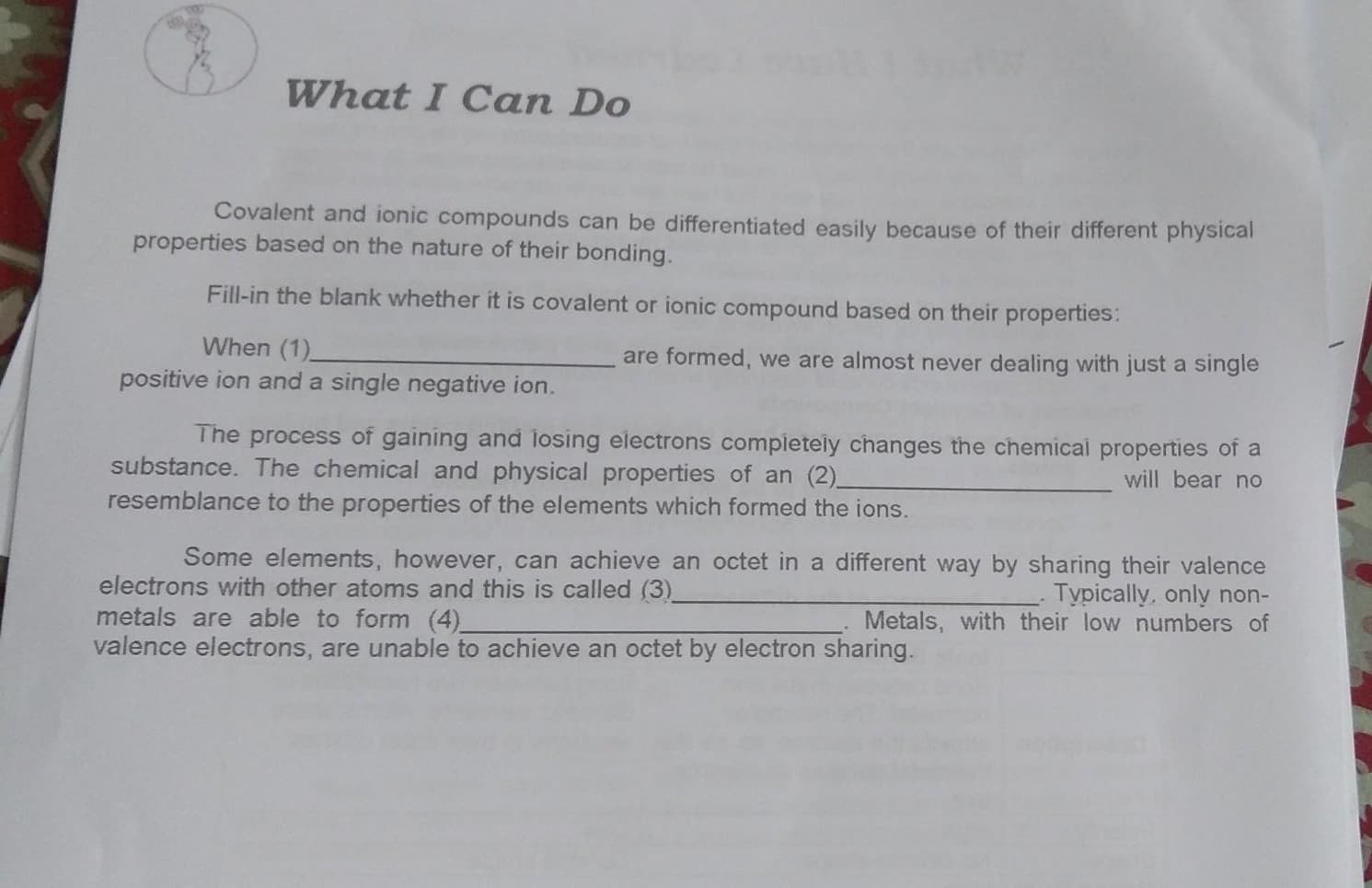What I Can Do Covalent and ionic compounds can be differentiated easily because of their different physical properties based on the nature of their bonding. Fill-in the blank whether it is covalent or ionic compound based on their properties: When (1). are formed, we are almost never dealing with just a single positive ion and a single negative ion. The process of gaining and losing electrons compietely changes the chemical properties of a substance. The chemical and physical properties of an (2)_ resemblance to the properties of the elements which formed the ions. will bear no electrons with other atoms and this is called (3) metals are able to form (4)_ valence electrons, are unable to achieve an octet by electron sharing. Some elements, however, can achieve an octet in a different way by sharing their valence Typically, only non- Metals, with their low numbers of
Types of Chemical Bonds
The attractive force which has the ability of holding various constituent elements like atoms, ions, molecules, etc. together in different chemical species is termed as a chemical bond. Chemical compounds are dependent on the strength of chemical bonds between its constituents. Stronger the chemical bond, more will be the stability in the chemical compounds. Hence, it can be said that bonding defines the stability of chemical compounds.
Polarizability In Organic Chemistry
Polarizability refers to the ability of an atom/molecule to distort the electron cloud of neighboring species towards itself and the process of distortion of electron cloud is known as polarization.
Coordinate Covalent Bonds
A coordinate covalent bond is also known as a dative bond, which is a type of covalent bond. It is formed between two atoms, where the two electrons required to form the bond come from the same atom resulting in a semi-polar bond. The study of coordinate covalent bond or dative bond is important to know about the special type of bonding that leads to different properties. Since covalent compounds are non-polar whereas coordinate bonds results always in polar compounds due to charge separation.
Fill in the blanks whether it is a covalent or ionic compound based on their properties:

Trending now
This is a popular solution!
Step by step
Solved in 2 steps









